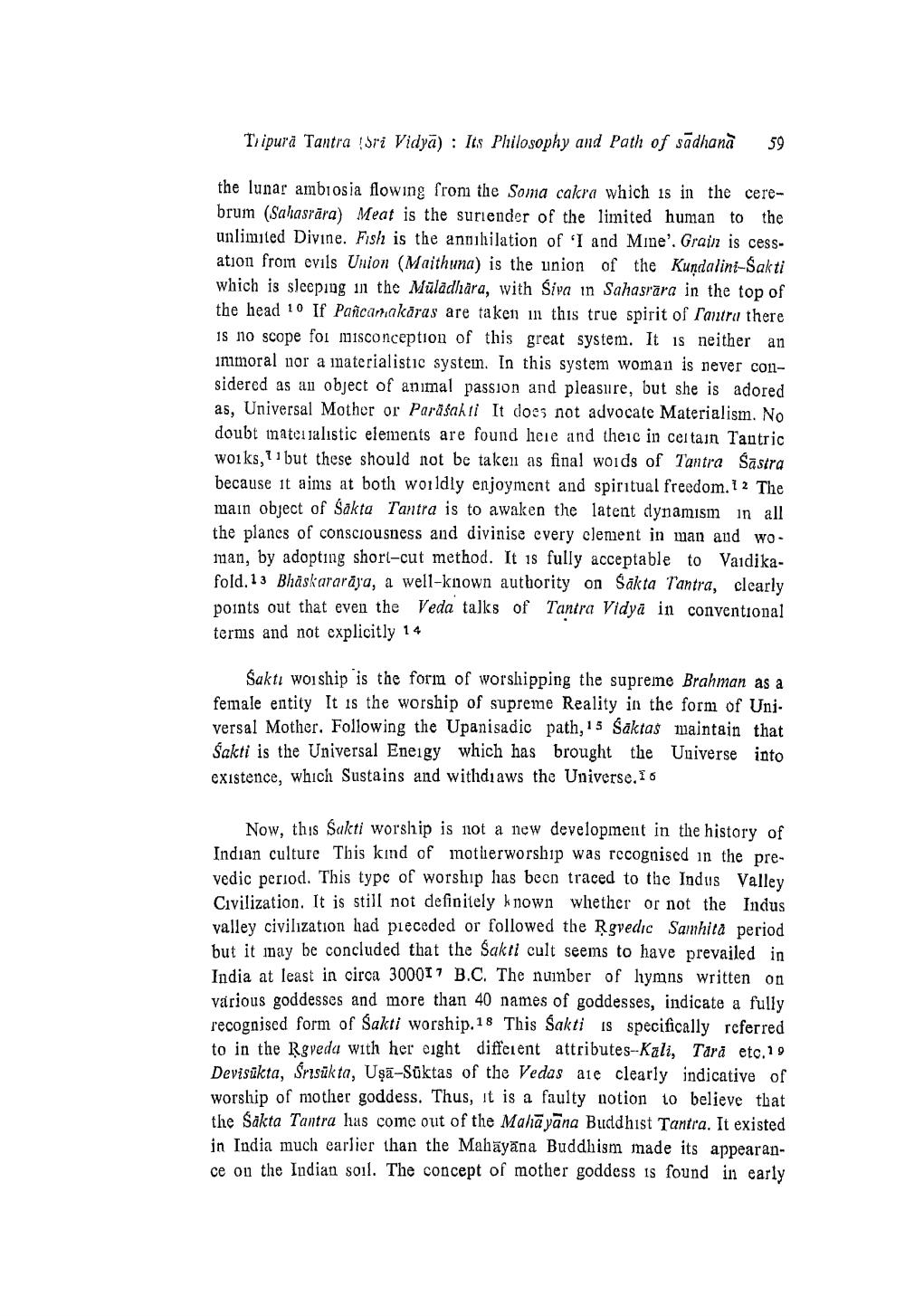________________
Tripura Tantra Sri Vidyā) : Its Philosophy and Path of sādhana
59
the lunar ambiosia flowing from the Soma cakra which is in the cerebrum (Sahasrāra) Meat is the suriender of the limited human to the unlimited Divine. Fish is the annihilation of 'I and Mine'. Grain is cessation from evils Union (Maithuna) is the union of the Kundalini-Sakti which is sleeping in the Maladhāra, with Śiva in Sahasrara in the top of the head 10 If Pañcamakāras are taken in this true spirit of Tantru there is no scope for misconception of this great system. It is neither an inimoral nor a materialistic systein. In this system woman is never considered as an object of animal passion and pleasure, but she is adored as, Universal Mother or Paräśahti It does not advocate Materialism. No doubt inaterialistic elements are found here and theic in certain Tautric works, but these should not be taken as final words of Tantra Sastra because it aims at both worldly enjoyment and spiritual freedom. 1 2 The main object of Sakta Tantra is to awaken the latent dynamism in all the planes of consciousness and divinise every element in man and wo. man, by adopting short-cut method. It is fully acceptable to Vaidikafold. 13 Bhāskararāja, a well-known authority on Sakta Tantra, clearly points out that even the Veda talks of Tantra Vidya in conventional terms and not explicitly 14
Saktı worship is the form of worshipping the supreme Brahman as a female entity It is the worship of supreme Reality in the form of Universal Mother. Following the Upanisadic path, 15 Saktas maintain that Sakti is the Universal Eneigy which has brought the Universe into existence, which Sustains and withdiaws the Universe. 16
Now, this Sakti worship is not a new development in the history of Indian culture This kind of motherworship was recognised in the prevedic period. This type of worship has been traced to the Indus Valley Civilization. It is still not definitely known whether or not the Indus valley civilization had pieceded or followed the Rgvedic Samhita period but it may be concluded that the Sakti cult seems to have prevailed in India at least in circa 300017 B.C. The number of hymns written on various goddesses and more than 40 names of goddesses, indicate a fully recognised form of Sakti worship.18 This Sakti is specifically referred to in the Rgveda with her eight different attributes-Kali, Tară etc.19 Devisükta, Śrısūkta, Uşa-Suktas of the Vedas are clearly indicative of worship of mother goddess. Thus, it is a faulty notion to believe that the Säkta Tantra has come out of the Maha yana Buddhist Tantra. It existed in India much earlier than the Mahāyāna Buddhism made its appearance on the Indian soil. The concept of mother goddess is found in early




